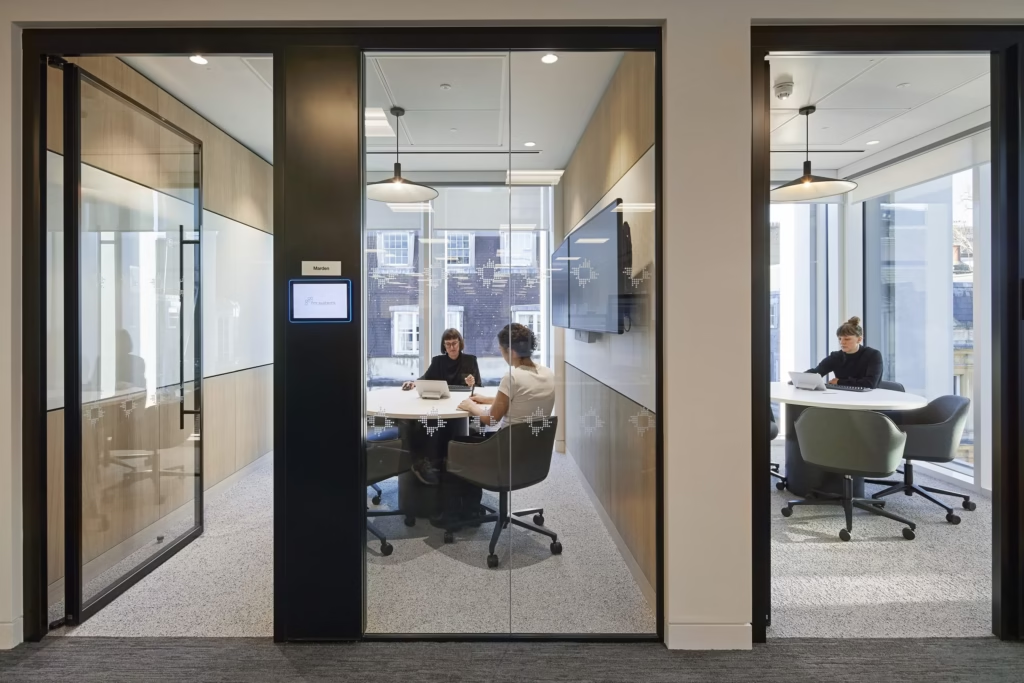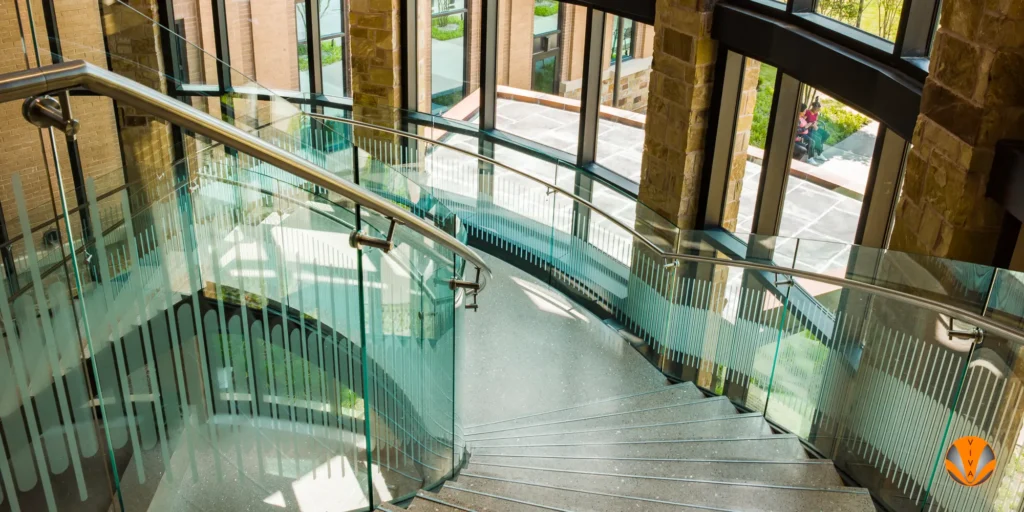Introduction to Glass Fitting Projects
Glass fitting projects can transform spaces, adding elegance and functionality to homes and businesses alike. Whether you’re installing a sleek glass shower door or creating stunning glass partitions, these projects require careful planning and execution. The right approach ensures not only a beautiful finish but also safety and durability.
As you embark on your glass fitting journey, it’s important to understand the nuances involved in working with this delicate material. From selecting the appropriate type of glass to mastering installation techniques, each step plays a critical role in achieving the desired outcome. This guide will provide you with essential tips that will set you up for success in your next glass fitting project. Ready to dive in? Let’s get started!
Understanding the Different Types of Glass

When embarking on a glass fitting project, it’s essential to familiarize yourself with the various types of glass available. Each type has its unique characteristics and applications.
Tempered glass is popular for its strength. It’s manufactured through controlled thermal processes, making it resistant to impact and thermal stress. This makes it ideal for shower doors or table tops.
Laminated glass consists of two or more layers bonded together by an interlayer. It’s known for safety; if broken, the shards stay stuck to the interlayer, reducing injury risk. This type works well in skylights and windows Glass fitting projects.
Then there’s insulated glass, which features multiple panes separated by space filled with gas for better energy efficiency. You’ll often find this in residential windows.
Understanding these differences will help you choose the right kind for your specific needs while ensuring a successful installation process down the line.
Preparing for a Glass Fitting Project
Preparing for a glass fitting project begins with thorough planning. Take time to assess the space where the glass will be installed. Understanding dimensions and existing structures is crucial.
Next, gather all necessary information about your specific project requirements. This includes knowing what type of glass you need based on functionality and aesthetics.
It’s important to create a timeline for your project as well. Setting clear deadlines helps keep everything on track.
Don’t overlook budget considerations either. Establishing a realistic budget can prevent unexpected costs down the line.
Consider consulting with professionals if you’re unsure about any aspect of the process. Their expertise can provide valuable insights that enhance your preparation efforts.
Tools and Materials Needed

For any glass fitting project, having the right tools and materials on hand is crucial. Begin with safety gear such as gloves and goggles to protect yourself during installation.
Next, you’ll need basic hand tools like a measuring tape, utility knife, and straightedge for accurate cuts. A glass cutter will be essential if you’re working with larger panels or custom sizes.
Adhesives play a key role in securing the glass. Choose silicone sealants or specialized glazing compounds designed for your specific type of glass installation.
Don’t forget about supports! Use wooden blocks or shims to hold the glass in place while you work.
Consider investing in suction cups for easier handling of heavier sheets. This simple tool can make lifting and positioning much safer and more efficient.
Safety Measures to Follow during Glass Fitting
Safety should always be a priority during glass fitting projects. Start by wearing protective gear, including safety goggles, gloves, and hard hats. This will shield you from sharp edges and potential accidents.
Ensure your workspace is clear of clutter. A tidy area helps prevent trips and falls while handling heavy or fragile materials.
When lifting glass panels, use proper techniques to avoid strain. Bend at the knees instead of the waist when picking up heavy pieces.
Always have a second person assist with large sheets of glass. Teamwork reduces the risk of dropping or mishandling items during installation.
Keep first aid supplies close by in case of minor injuries. Being prepared can make all the difference when unexpected situations arise during a project.
Measuring and Cutting Glass to Fit Properly

Measuring glass accurately is crucial for a successful fit. Start by using a reliable tape measure, ensuring it’s straight and aligned with the edge of the frame or opening. Take multiple measurements at different points to account for any inconsistencies.
When marking your cuts, use a fine-tip marker for precision. A clear line will help guide your cutter and minimize errors.
Cutting glass requires the right technique and tools. Use a glass cutter designed for clean lines; applying consistent pressure while scoring is key. Always make sure you’re working on a flat surface to avoid accidents.
Once scored, snap the glass along the line gently but firmly. If it doesn’t break easily, don’t force it—recheck your scoreline before proceeding further to prevent damage or injuries.
With everything measured correctly and cut precisely, you’ll save time during installation and ensure that the finished product looks professional.
Techniques for Installing Glass
When installing glass, precision is key. Start by ensuring your frame is clean and level. Any debris can affect the fit.
Use suction cups for larger panes to avoid fingerprints and ensure a secure grip. Position the glass carefully in the frame, making sure it sits evenly.
Consider using spacers or shims as you set the glass into place. These will help maintain an even gap around all sides, which is crucial for sealing later.
For fixed installations, apply silicone sealant along the edges before securing with clips or brackets. Make sure to choose a high-quality sealant that’s suitable for outdoor use if needed.
If you’re working on shower doors or similar applications, install hinges first before mounting any panels to ensure accuracy in alignment. Always double-check your measurements throughout this process; it’s easier to correct mistakes early on than after installation is complete.
Common Mistakes to Avoid

When tackling glass fitting projects, avoiding common mistakes can save you time and frustration. One major pitfall is neglecting proper measurements. An incorrect measurement can lead to ill-fitting panels that compromise both aesthetics and functionality.
Another frequent error is skimping on quality materials. Cheap glass or inadequate supports may seem like a cost-saving measure but can result in safety hazards down the line.
Failing to account for thermal expansion is also problematic. Glass expands and contracts with temperature changes, so ensure there’s enough space for this movement.
Improper sealing techniques are often overlooked as well. Inadequate sealing can allow moisture infiltration, leading to mold growth or structural damage over time.
Rushing the installation process is a recipe for disaster. Take your time to ensure every step is executed correctly; it pays off in the long run.
Maintaining and Cleaning Installed Glass
Maintaining and cleaning installed glass is essential for longevity and clarity. Regular care helps prevent dirt buildup and keeps your surfaces sparkling.
Start with a gentle approach. Use a soft microfiber cloth or sponge to avoid scratches. For everyday dust, a dry cloth works wonders.
When it’s time for deeper cleaning, opt for a solution of vinegar and water. This natural mixture removes grime without leaving harmful residues behind. Spray the solution on the glass surface, then wipe in circular motions.
Avoid abrasive cleaners that could damage the finish or sealant around the edges. A squeegee can also be handy for achieving streak-free results after washing.
For outside glass installations, consider seasonal cleanings to combat environmental factors like bird droppings or tree sap. Staying proactive ensures your glass remains clear and beautiful throughout its lifespan.
Troubleshooting Tips for any Issues Encountered

Even with careful planning, issues can arise during glass fitting. Knowing how to troubleshoot effectively can save time and frustration.
If you notice gaps between the glass and frame, double-check your measurements. Often, these discrepancies stem from inaccurate cuts or improper installation techniques.
For cracked or chipped glass, assessment is key. Small cracks may be repairable with appropriate adhesives; however, larger damages often require replacement. Always prioritize safety when handling broken pieces.
If your installed glass doesn’t sit flush, examine the mounting hardware. Ensure that everything is tightly secured and aligned correctly to avoid any further complications.
If condensation forms between panes in insulated units, this indicates a seal failure. Addressing this promptly can prevent moisture damage and maintain energy efficiency.
Keep these troubleshooting tips handy to navigate common pitfalls during your project smoothly.
Conclusion
Glass fitting projects can be rewarding and enhance the aesthetic of any space. By following these essential tips, you’ll not only ensure a smoother installation process but also extend the longevity of your glass installations. Understanding different glass types, preparing adequately, using the right tools, and adhering to safety protocols are crucial steps in achieving success.
Mistakes can happen; however, being aware of common pitfalls will help you avoid them. Remember that maintaining and cleaning installed glass is just as important as the initial fitting—proper care keeps it looking pristine for years to come.
With careful planning and execution, your next glass fitting project can turn out beautifully. Embrace the journey ahead with confidence!








